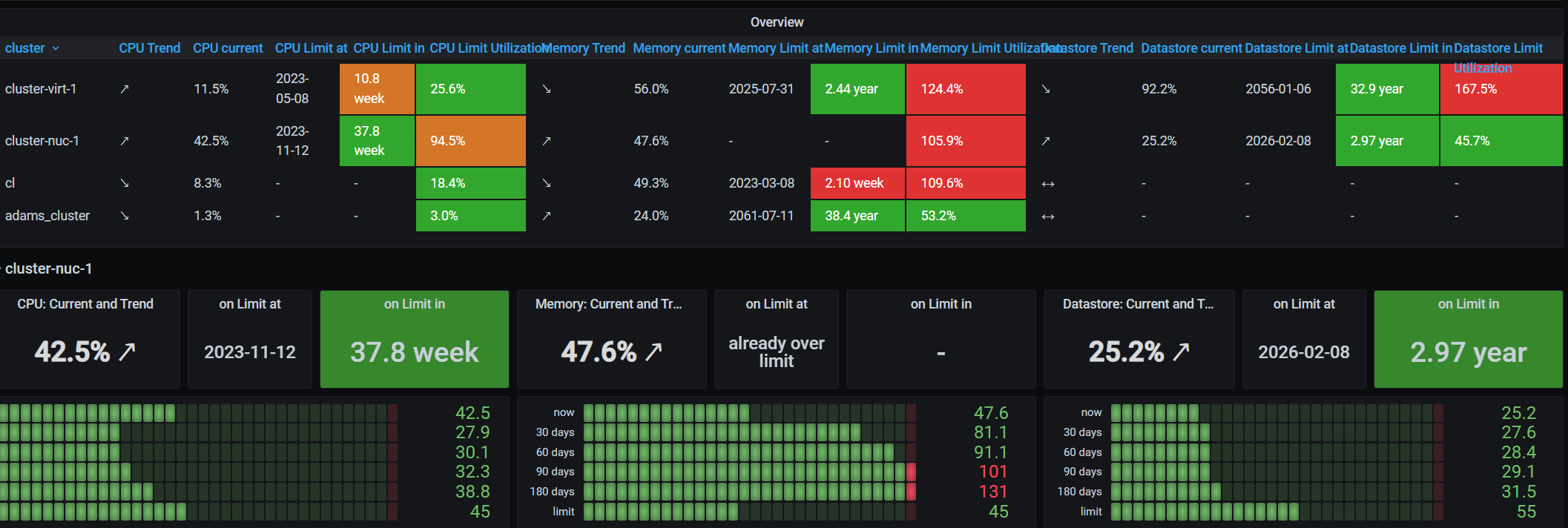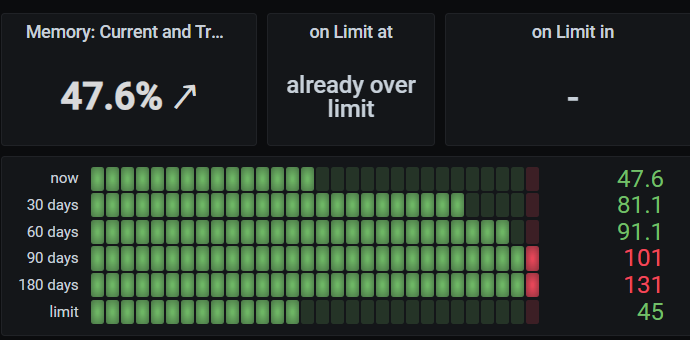Maximizing Performance with Effective VMware Capacity Planning and Forecasting
With the ever-increasing demand for resources in virtualized environments, it is becoming increasingly important for organizations to have an effective VMware capacity planning and forecasting process in place. Capacity planning, right-sizing, and forecasting are critical parts of any IT infrastructure and are crucial for ensuring that resources are used optimally and that performance is maximized.
In this blog post, we will discuss the benefits of VMware capacity planning, the capacity planning process, how to use Opvizor for proper planning, and best practices for capacity planning and forecasting.

Benefits of VMware Capacity Planning
The primary benefit of VMware capacity planning is that it helps ensure that the organization’s IT infrastructure is running optimally. By monitoring resources and performance, organizations can identify any potential issues or bottlenecks in their infrastructure and take the necessary measures to resolve them. Additionally, capacity planning can help to identify areas of waste or inefficiency in the system, allowing organizations to maximize their resources and reduce their costs.
Another benefit of VMware capacity planning is that it can help organizations to be more agile and responsive. By monitoring and tracking usage, organizations can quickly identify underutilized areas and allocate resources to those areas as needed. This allows them to quickly respond to changes in demand, ensuring that their IT infrastructure is always running at peak performance.
Finally, proper capacity planning can help to improve uptime and reliability. By monitoring resource usage and performance, organizations can quickly identify any potential upcoming lack of resources and take steps to address them.

VMware Capacity Planning Process
The VMware capacity planning process begins with a thorough assessment of the current IT infrastructure. This includes an analysis of the hardware, software, and network resources currently in use and any areas of potential improvement. This assessment is then used to create a capacity plan, which outlines the resources needed to meet the organization’s current and future needs.
Once the capacity plan has been created, it is then used to create a baseline for performance. This baseline is then used to monitor the system’s performance and identify potential issues or bottlenecks. If any problems are identified, the capacity plan can be adjusted to address them.
Finally, the capacity plan is used to create a forecast for future performance. This forecast is used to identify any potential areas of growth or decline, as well as any potential changes in demand. This allows organizations to better plan for future capacity needs, ensuring that their IT infrastructure runs optimally.
It is important that the baseline is based on real usage data, therefore having 30-90 days of real usage data is important.
Furthermore, you need to be aware of the hardware delivery time once ordered. Let's say you need 60 days on average between the order and the readiness of the new ESXi. In that case, you need to make sure to alert based on the forecasted limit reach date and add that 60+ buffer.

VMware Capacity Planning Tools
Opvizor is a powerful monitoring and analytics software that also helps you to plan and forecast IT capacity. It provides a detailed analysis of usage and performance, allowing you to identify areas of inefficiency and make the necessary adjustments to maximize their resources.
Luckily Opvizor has a dashboard built in that supports you to forecast resource usage based on historic usage. As an existing user, you can simply type "forecasting" in your dashboard search.
By default, Opvizor uses the last 90 days of usage and resource usage growth to forecast the next 30 days and after. You can adjust the upper usage limits to add a safety buffer to cover the procurement time.
Best Practices for VMware Capacity Planning and Forecasting
There are several best practices that organizations should follow when engaging in VMware capacity planning and forecasting. These practices include:
- Developing a comprehensive plan: Organizations should create a comprehensive capacity plan that outlines the resources needed to meet their current and future needs. This plan should include an assessment of the current IT infrastructure, as well as a detailed analysis of potential areas of improvement. Don't forget to think about the time from hardware orders to readiness.
- Monitoring performance: Organizations should monitor the performance of their IT infrastructure on a regular basis. This will help to identify any potential issues or bottlenecks, as well as any areas of waste or inefficiency.
- Creating a forecast: Organizations should create a forecast for future performance. This will allow them to identify any potential areas of growth or decline, as well as any potential changes in demand.
- Utilizing automated tools: Organizations should utilize automated software such as Opvizor to help manage and monitor their IT infrastructure. These tools can provide detailed analysis of usage and performance, allowing organizations to maximize their resources and ensure optimal performance.
- Think about anomalies: maybe the last 90 days did not include an annual high-performance utilization event.
Conclusion
VMware capacity planning and forecasting is a critical part of any IT infrastructure. By following the best practices outlined above, organizations can ensure that their IT infrastructure is running optimally and that resources are being used efficiently. You don't need to take our word for it.
Simply evaluate Opvizor and see yourself.
Opvizor Trial